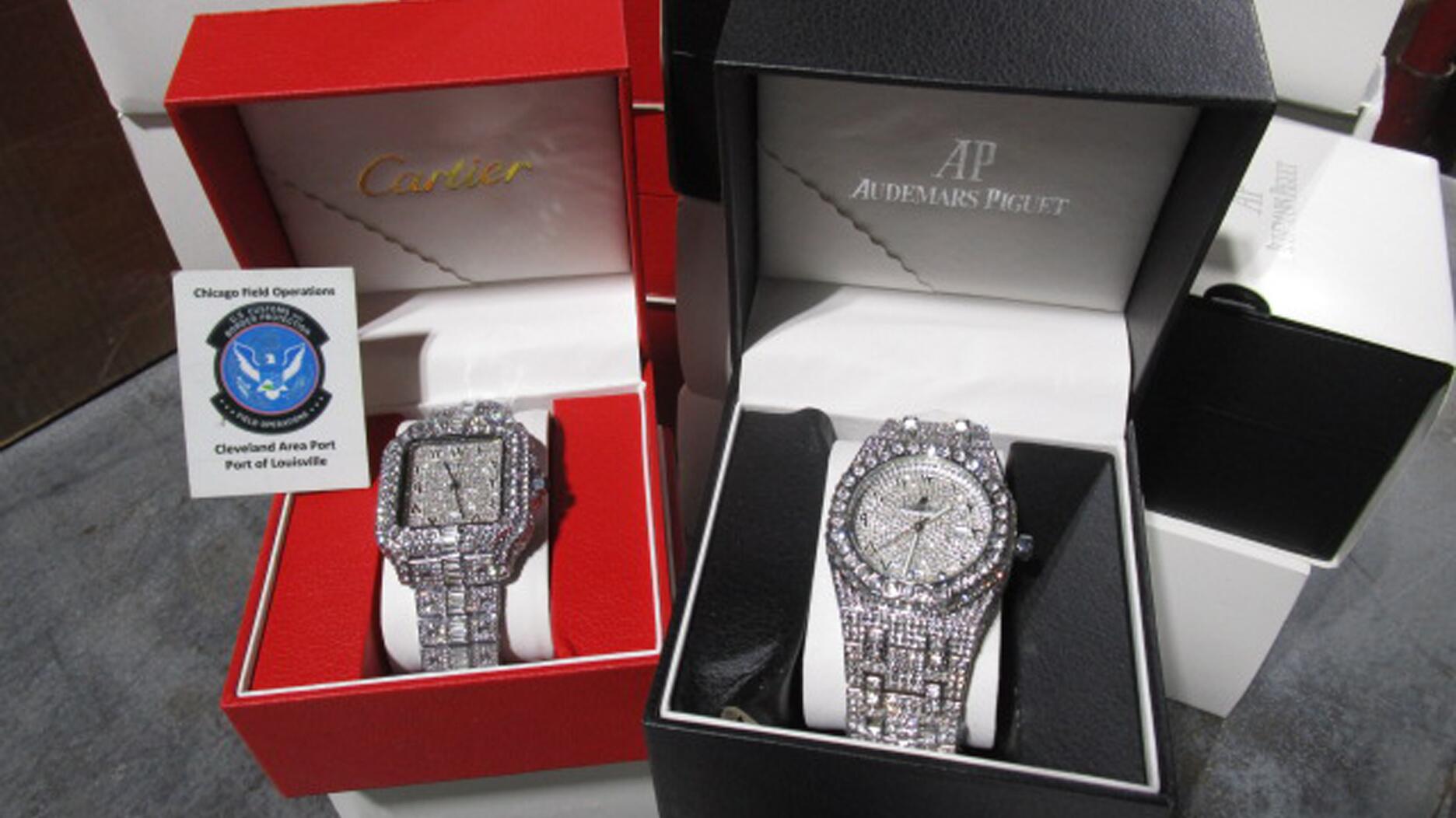US Customs Seizes $10M in Counterfeit Jewelry
Officers intercepted three packages within 24 hours containing fake goods claiming to be from various luxury brands.

The packages were stopped for containing items that infringed on designers’ protected trademarks which had been recorded with CBP for border enforcement through the e-Recordation program.
The packages were handed over to Homeland Security Investigations for further analysis.
If the jewelry had been genuine, all three shipments would have had a combined retail value of more than $10.1 million.
The first package was halted on July 1, originating from China and heading to a residence in Brooklyn, New York.
It contained 1,466 pieces of jewelry bearing fake trademarks from Van Cleef & Arpels, Louis Vuitton, Hermès, Gucci, Tous, Dior, Prada, Versace, Tiffany & Co., Bulgari, Calvin Klein, Cartier, Chanel, Michael Kors, Carolina Herrera, Tory Burch, Rolex, Yves Saint Laurent, and Daniel Wellington.
The retail value of these items would have been over $5.1 million, if genuine.
On July 2, two additional packages were seized, also originating from China. However, they were heading to separate residential addresses in Miami, Florida.
The second shipment contained necklaces, bracelets, and earrings with fake trademarks from Cartier and Van Cleef & Arpels, while the third package contained counterfeit necklaces, bracelets, earrings, and rings from these brands.
Together, these two packages had a total of 921 pieces of counterfeit jewelry that would have a retail value of nearly $5 million if they were genuine.
“These large seizures illustrate the work our officers do every day to protect our country, its citizens, and the economy,” said LaFonda D. Sutton-Burke, director of Chicago Field Operations.
“Every day, CBP officers are seizing these fraudulent de minimis shipments sent by bad actors. Criminals are trying to exploit the mail environment by peddling their counterfeit products. Even though this package had a low declare value, they pose the same potential health, safety, and economic security risks as larger and more traditional containerized shipments.”
The three seized packages were uninsured and imported to Louisville under de minimis regulations, also known as “Section 321,” allowing shipments to pass through CBP free of duty and tax, by marking the merchandise as imported by one person on one day with an aggregated fair retail value in the country of shipment of $800 or less.
CBP estimates that nearly 90 percent of shipments coming into the U.S. are claiming the de minimis exception.
With the rise of e-commerce and small packages, CBP says “illegal actors are taking advantage of the unprecedented volume of e-commerce shipments entering the U.S. and the opacity of global supply chains to introduce illicit goods into the country.”
CBP has an educational initiative to raise consumer awareness on the consequences and dangers associated with purchasing counterfeit goods and encourages anyone with information about counterfeit merchandise illegally imported into the U.S. to submit an anonymous e-Allegation report.
The Latest

Consumers shared concerns about prices, inflation, tariffs, trade, and politics in the survey’s write-in response section.

In February 2026, the auction house will move its headquarters to the former Steinway Hall, a neoclassical landmark on Billionaires’ Row.

The new show will take place Jan. 23-25, 2026.

How Jewelers of America’s 20 Under 40 are leading to ensure a brighter future for the jewelry industry.

The former BHP Billiton leader and Gemfields chairman is remembered for his influential leadership throughout his 50-year mining career.


The LVMH-owned brand has partnered with the costume design union to revamp its award for 2026.

The luxury titan inked a deal to acquire an initial minority stake in the jewelry manufacturer with a pathway to full ownership by 2032.

Roseco’s 704-page catalog showcases new lab-grown diamonds, findings, tools & more—available in print or interactive digital editions.

The company’s curation of unsigned vintage and estate jewelry debuted at the Bloomingdale’s in Costa Mesa, California.

Helzberg’s Chief Retail Officer Mitch Maggart shared details about its tests of a new store concept rooted in an elevated luxury experience.

Jewelers of America execs and National Jeweler editors discuss tariffs, the sky-high gold price, and the engagement that broke the internet.

The luxury goods company said founder Ippolita Rostagno will remain at the brand’s helm.

Laura Burdese, who joined the Italian luxury brand in 2022, will take on the role in July.

The National Jeweler editors revisit the most noteworthy industry happenings and design trends from 2025.

Need a gift for the cat lover who has everything? Look no further than our latest Piece of the Week.

It purchased the “Grosse Pièce,” an ultra-complicated Audemars Piguet pocket watch from the ‘20s, for a record-breaking price at Sotheby’s.

The lab-grown diamond grower now offers custom engagement and fashion jewelry through its Kira Custom Lab Jewelry service.

Chandler got his start at Michelson Jewelers and has served as DCA president and CEO since 2001. He will retire at the end of the month.

The boutique is slated to open this week inside Terminal 8, offering pre-owned Rolex watches and more to international travelers.

Sponsored by Digital Monitoring Products

The special-edition egg pendant ingested in a New Zealand jewelry store was recovered after a six-day wait.

Associate Editor Natalie Francisco plays favorites with Piece of the Week, selecting a standout piece of jewelry from each month of 2025.

The “Love and Desire” campaign is inspired by the magic that follows when one’s heart leads the way, said the brand.

Two awardees will receive free tuition for an educational course at the Swiss lab, with flights and lodging included.

Berta de Pablos-Barbier will replace Alexander Lacik at the start of January, two months earlier than expected.

Sotheby’s held its first two jewelry sales at the Breuer building last week, and they totaled nearly $44 million.

Winners will receive free registration and lodging for its fourth annual event in Detroit.




























